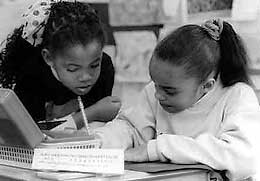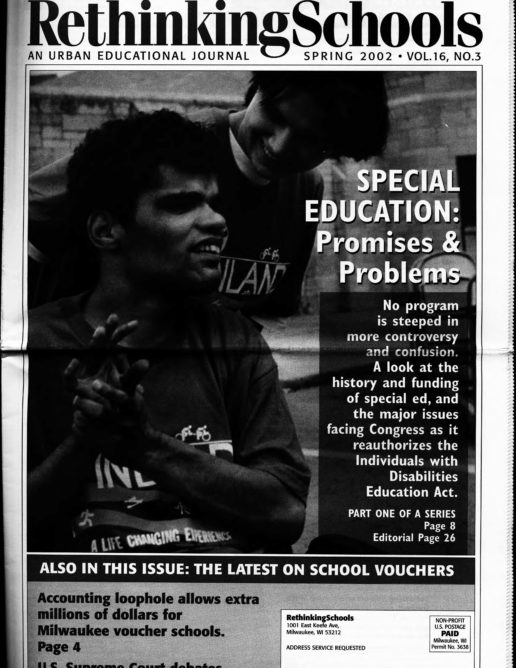Testing Companies Go for the Gold
Testing is getting a big push from one important source, which gets little media coverage - the testing companies themselves.

Dominating the field are three big publishers. McGraw-Hill and its subsidiary, CTBS, the Terranova Test series. Harcourt Inc.’s Education Group publishes the STAR test, and Houghton-Mifflin’s Riverside division publishes the Iowa Test of Basic Skills and the Metropolitan Achievement Test.
Together, test publishers divide a testing market that was estimated at $218.7 million in 1999 by the Association of American Publishers. The publication of standardized tests is considered part of the market for instructional materials, which, at $3.4 billion, is more than 15 times as large. But the market for tests has been growing at an average of seven percent a year for over a decade – much faster than the market for textbooks, where the annual growth rate was 3 percent over the last four years, according to the executive director of the association’s school division, Steven Dreifler. That growth rate alone makes it an attractive market for publishers, and one that promises to become much larger and more important in relation to their traditional business of publishing books.
Houghton-Mifflin’s Riverside testing operation, which sells the Iowa test, grew by a phenomenal 17 percent in 1999, while its overall textbook division grew by 9.2 percent. In 1997, McGraw-Hill’s testing division had gross income of $95 million.
Test contracts are lucrative. McGraw-Hill won a $30 million contract for tests in Kentucky last year. Mississippi, a state with one of the lowest per-pupil spending levels in the country, signed a 10-year testing contract with McGraw-Hill for a total of $29.4 million.
During his presidential campaign, George W. Bush touted Texas’ “education miracle”, where beginning in 1985, Harcourt developed the now-famous Texas Academic Assessment Skills test. Texas currently contracts for test development with National Computer Systems for $20 million a year. NCS in turn subcontracts to Harcourt, which also gets another $2.8 million a year for developing TAAS study guides.
Being the test developer can be very advantageous. Harcourt’s textbooks were marketed to local districts around the state with a flier stating “Why choose Harcourt Brace for your math program? … [It is the] only program to have texts written by the same company that helps to write the TAAS tests…”
Stating the connection so boldly is considered bad form, and Harcourt later said it would discontinue the promotion. But according to the Texas Education Agency, the company sold $25 million worth of elementary school math textbooks in 1999.
Overall, 20 states now work with publishers to come up with standards for what students are expected to know. The company that helps develop the standards, presumably, has a better chance at getting the bid for the test, and an advantage in selling textbooks, which meet the curriculum requirements as well.

